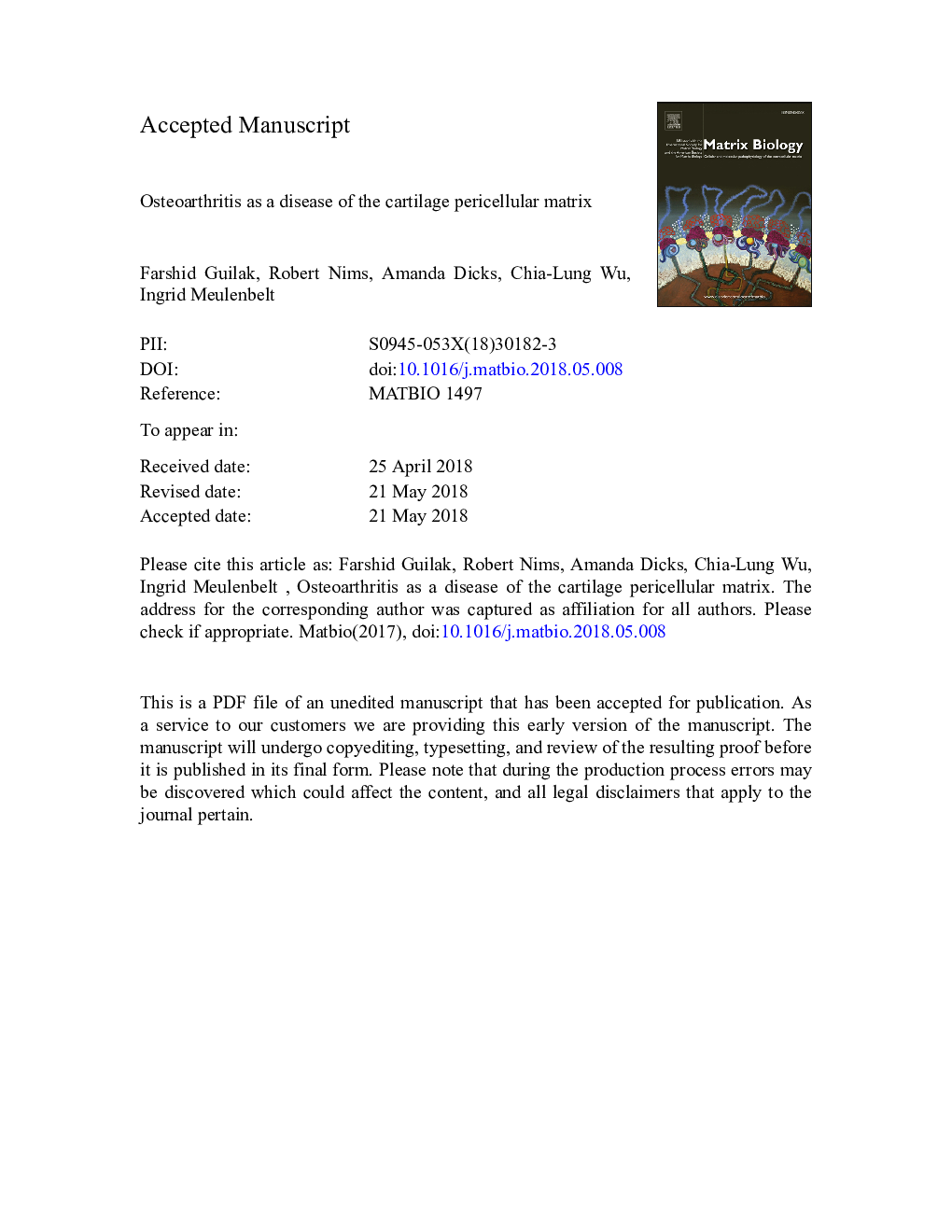| Article ID | Journal | Published Year | Pages | File Type |
|---|---|---|---|---|
| 10157689 | Matrix Biology | 2018 | 25 Pages |
Abstract
Osteoarthritis is a painful joint disease characterized by progressive degeneration of the articular cartilage as well as associated changes to the subchondral bone, synovium, and surrounding joint tissues. While the effects of osteoarthritis on the cartilage extracellular matrix (ECM) have been well recognized, it is now becoming apparent that in many cases, the onset of the disease may be initially reflected in the matrix region immediately surrounding the chondrocytes, termed the pericellular matrix (PCM). Growing evidence suggests that the PCM - which along with the enclosed chondrocytes are termed the “chondron” - acts as a critical transducer or “filter” of biochemical and biomechanical signals for the chondrocyte, serving to help regulate the homeostatic balance of chondrocyte metabolic activity in response to environmental signals. Indeed, it appears that alterations in PCM properties and cell-matrix interactions, secondary to genetic, epigenetic, metabolic, or biomechanical stimuli, could in fact serve as initiating or progressive factors for osteoarthritis. Here, we discuss recent advances in the understanding of the role of the PCM, with an emphasis on the reciprocity of changes that occur in this matrix region with disease, as well as how alterations in PCM properties could serve as a driver of ECM-based diseases such as osteoarthritis. Further study of the structure, function, and composition of the PCM in normal and diseased conditions may provide new insights into the understanding of the pathogenesis of osteoarthritis, and presumably new therapeutic approaches for this disease.
Keywords
Related Topics
Life Sciences
Biochemistry, Genetics and Molecular Biology
Cancer Research
Authors
Farshid Guilak, Robert J. Nims, Amanda Dicks, Chia-Lung Wu, Ingrid Meulenbelt,
